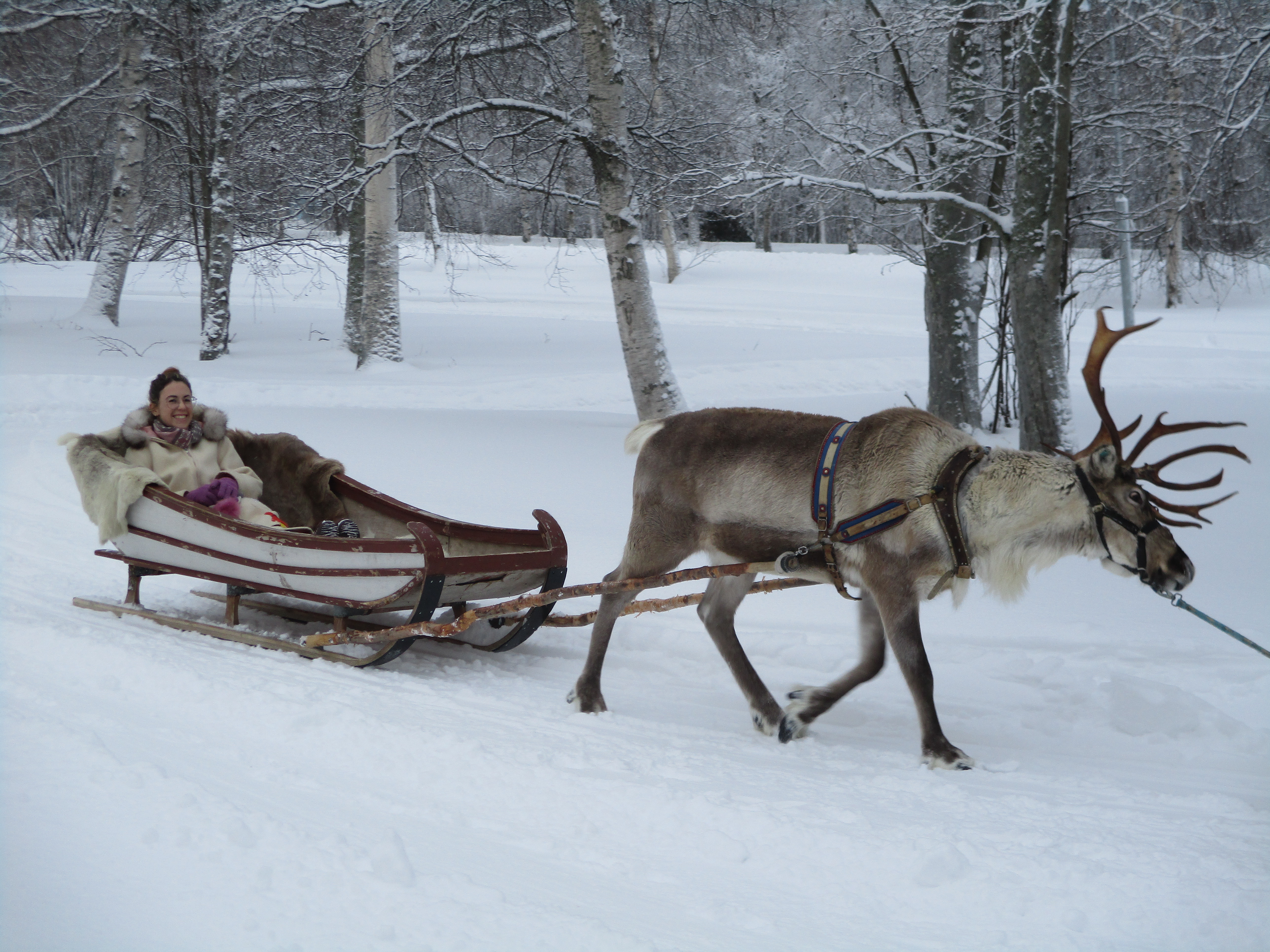Convocation ‘20: Emily Hull
Donna McKinnon - 19 November 2020

Growing in rural Georgia, Emily Hull immersed herself in the local fauna, whether that was birds, rabbits, turtles, or less appealingly but still with a curious eye, snakes. Her fascination with the natural world deepened, eventually leading her to study human-animal interactions and zooarchaeology at the university level. Now graduating with a PhD in Anthropology, Hull has focused her research on reindeer and caribou in Canada and Fennoscandia, studying anatomy, osteology, pathology—and of course, their myriad connections to humans.
Hull’s attachment to wild animals manifests not only in her career choices, but also to her home, where she lives with a 12 year old feral rescue cat, Jolene, her constant companion throughout her studies. Hull’s closest friends, she says, have often been animals.
That passion extends to her role as an educator. In 2018, Hull earned a 2018 Graduate Student Teaching Award in recognition of the deep knowledge and sensitivity she brings to the learning environment of her classrooms.
After graduation, Hull will continue her work as a Postdoctoral researcher in Finland, studying zooarchaeology and reindeer domestication, as well as archaeological and osteological examinations of Sámi reindeer herding, working reindeer, paleoecology and the roles of reindeer in historical societies.
What drew you to the area of your study, and why are you passionate about it?
I have always had a deep interest in the lives of animals and how their lives have and do intersect with ours. As a child I had many “wild” animals who lived in my backyard, from snakes and turtles to the occasional orphaned squirrel, and my closest friends have often been animals. The blurring between human and animal lives as well as the importance of animals in human history is often undervalued when we study our pasts, seeing animals only as commodities, rather than individuals with their own lives, histories, and agency.
As our climate changes and new struggles emerge, we face changing relationships with other species, whether they are “pests” such as coyotes, raccoons, or mice; companions such as dogs and cats; or larger wild animals such as moose, deer, wolves, cougars, and bears. We will have to learn to share our urban and rural spaces in order for us all to survive, and looking to our past relationships with animals can help us determine the best futures for both human and non-human citizens.
What is the most remarkable thing you learned while you were a student?
I can’t pinpoint a single experience that was the most remarkable: the opportunity to look at archaeological specimens with Dr. Robert Losey in Russia, speaking and riding with herders in Finland, watching reindeer races, and the opportunity to learn and collaborate with such incredible people, professors and students alike. My time at the University of Alberta was one of the highlights of my life thus far, and I built such incredible memories here that it is impossible to pick just one.
Did you face any significant challenges, and if so, how did you deal with it?
I am an autistic woman, and that has always come with its own set of anxieties, especially when trying to communicate. That said, I feel that science has given me the language set to be able to express the things that I find really important and inspiring, and that writing about my studies has helped me find my voice. My PhD has been a time when I really felt that I could finally speak and be understood, and, in an academic environment, my struggles to communicate have been mitigated by having a foundation from which to express the things that I am passionate about.
How did you manage the challenges of navigating student life under COVID-19 restrictions and remote learning?
I was lucky enough to be finishing writing my dissertation when the COVID-19 restrictions began, but the pandemic made me realize the need for both contingency planning and compassion for everyone in strange, unprecedented, and emergency situations. Although I had to do my doctoral defence over video chat, it seems like a small sacrifice to make for our community’s health, and it will certainly be a story to tell in the years to come.
What piece of advice do you wish someone had given you when you started?
Talk to your professors and don’t get infected with other peoples’ anxieties! We all have different stressors and different ways of dealing with them. Many students seem to measure their effort in terms of misery, and it took a long time for me to realize that that wasn’t necessary. While there will be periods of stress and anxiety, you also should enjoy your studies and work hard and feel proud of yourself for your accomplishments! We are all works in progress and no one expects you to be perfect.
What is next for you?
I will be beginning a postdoctoral position at the University of Oulu, Finland, within the Arctic Interchanges research programme. I will continue work in domestication studies in the far north, working in the Arctic Interactions project and in collaboration with the Domestication in Action project. I will be continuing my work with zooarchaeology and reindeer domestication, including archaeological and osteological examinations of Sámi reindeer herding, working reindeer, reindeer paleoecology and the roles of reindeer in historical societies. These studies will include examinations of zooarchaeological assemblages, with a continuing focus on human-animal relationships and animal agency.